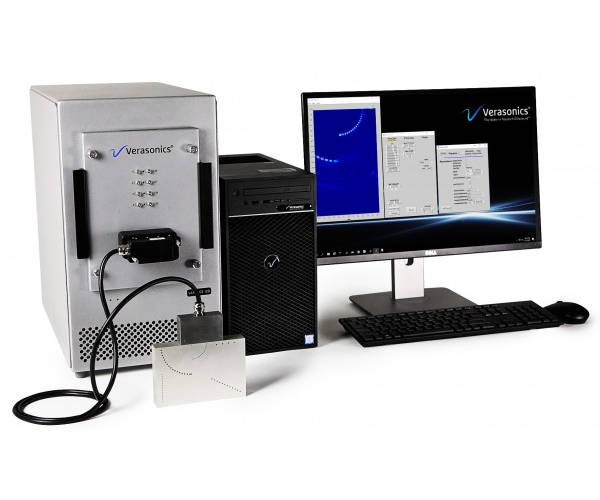REQUEST A QUOTE / ENQUIRY FORM
Hardware Components
- System configurations with 32, 64, 128 and 256 channels
- Low-level programmability, with complete control of transmit and receive parameters at the channel level
- Advanced tri-state transmitter
• High-fidelity arbitrary waveform generation, with independent programmability per channel
• Extended transmit option for transmitting waveforms of several milliseconds in length
- High-speed acquisition and data transfer
• Data acquisition into local memory at more than 100,000 frames per second
• High-speed data transfer from the data acquisition system to computer at up to 6.6 GB/s sustained
- Frequency bandwidth options from 50 kHz to 50 MHz
- Universal Transducer Adapter (UTA) system with a choice of adapters allows users to connect a broad range of commercially available, or custom, transducers
Software Components
- Intuitive sequence programming
• Low-level programmability of the hardware is provided through a MATLAB SDK, enabling precise control of all transmit, receive and sequence timing attributes
• The user may implement all data processing or, optionally, utilize a range of included signal processing, image reconstruction, display and control functions
- Image reconstruction option
• Fast synthetic delay-sum beamforming, supporting TFM, plane wave, virtual source imaging and more
• Image reconstruction on the order of 107 pixels per second using a standard, commercially available CPU
• User-programmable synthetic beamforming delays for easy implementation of accurate, high frame-rate imaging for custom applications
- NDE Research software option
• An easy to use, high-level graphical interface which complements the low-level user programmability
• Provides advanced real-time imaging and convenient data acquisition without the need for programming by the user
Customer Support
- Protect your investment with Verasonics' upgrade program; users can easily adapt and expand their systems to meet the needs of emerging applications
- Technical support included with each system purchase allows customers to engage with our scientists and engineers for technical questions, e.g. script troubleshooting
- Extensive product documentation including User Manuals, a Sequence Programming Tutorial, and Application Notes
- The Verasonics Community web site offers an online library of training videos, product documentation and a repository of novel programming
- Multiple software toolboxes and library of over 500 example scripts make the system easy to use and provides a head start for programming the system
- Training events offered multiple times per year
- Versatile Multi-channel Acquisition and Analysis System
- Phased Array Imaging with Real-Time FMC & TFM Capability
- Ultra-High Frame Rate Imaging with Plane Wave Technology
- Nonlinear Imaging
- Volumetric (3D) Imaging
Verasonics’ research ultrasound solutions provide a platform for ultrasonic, acoustic and
material science research and development efforts. Researchers across the globe frequently
publish groundbreaking advancements made with this technology; Verasonics solutions are often
referenced in scientific publications.
SCIENTIFIC REFERENCES >>>

